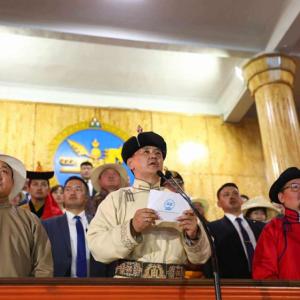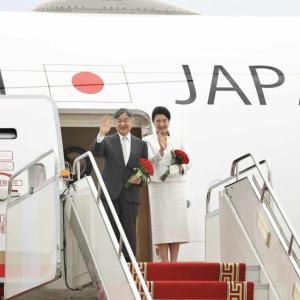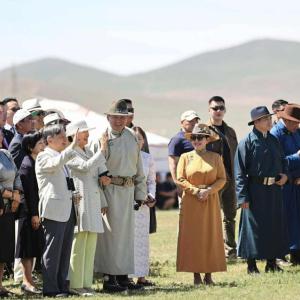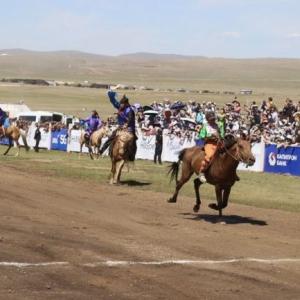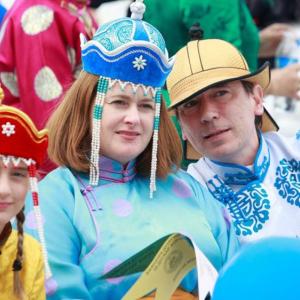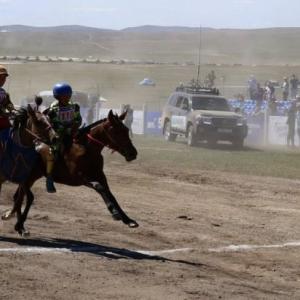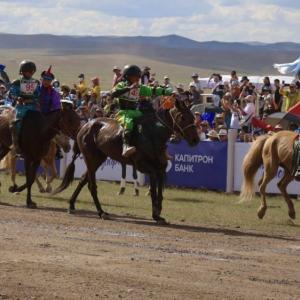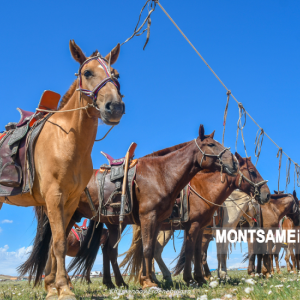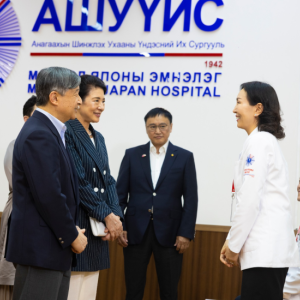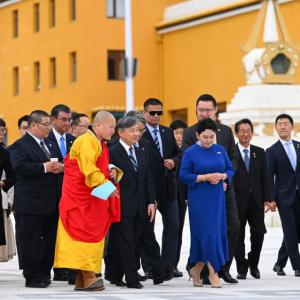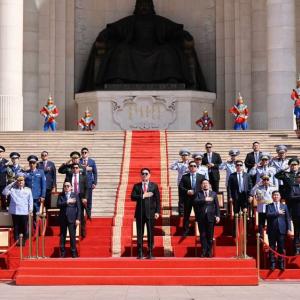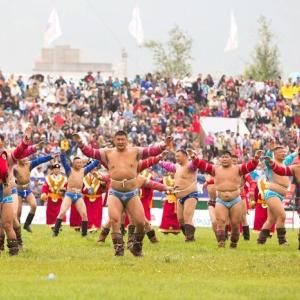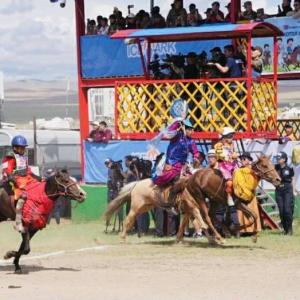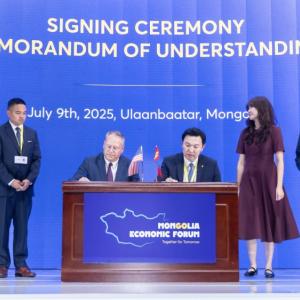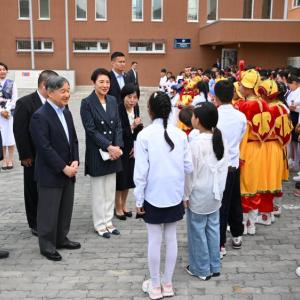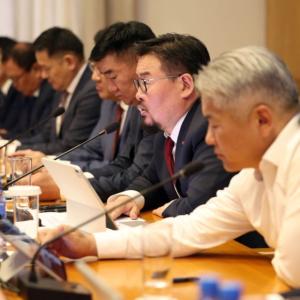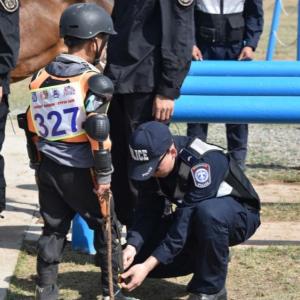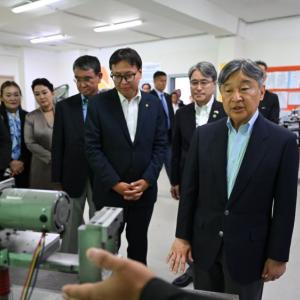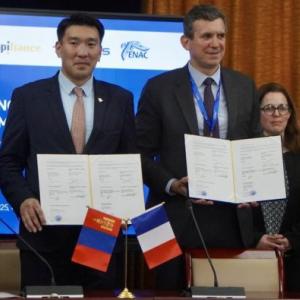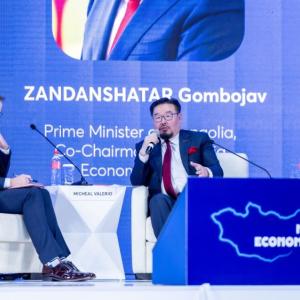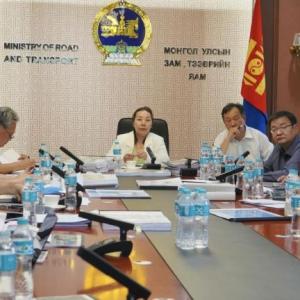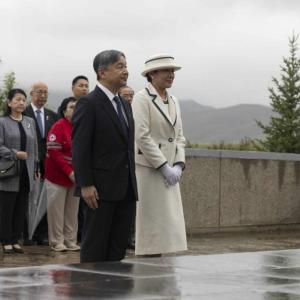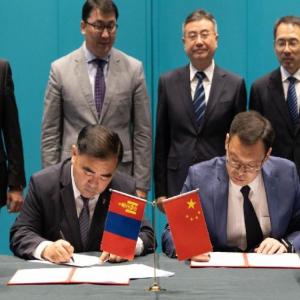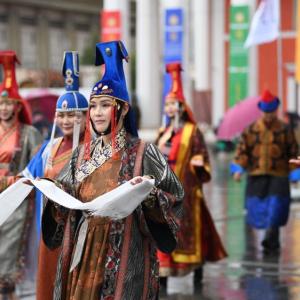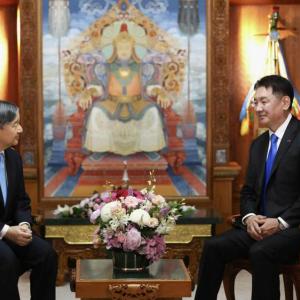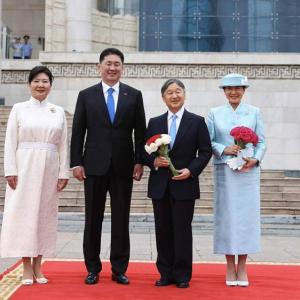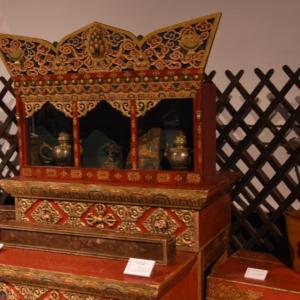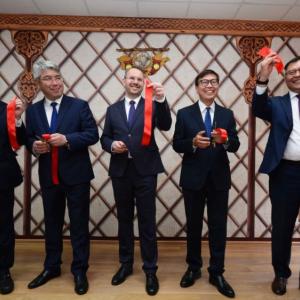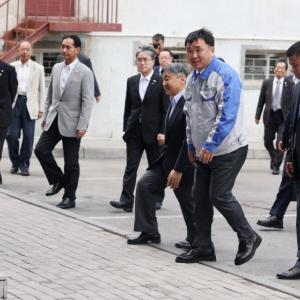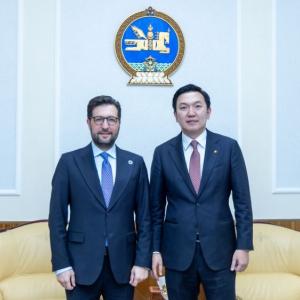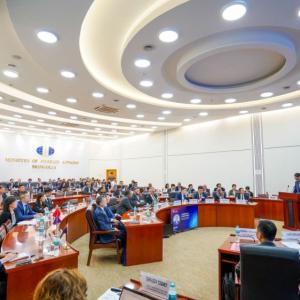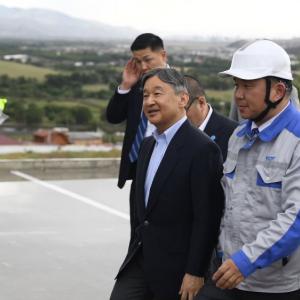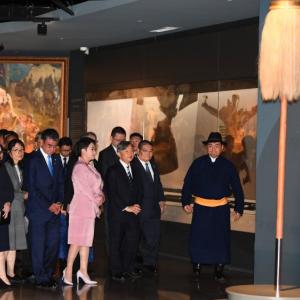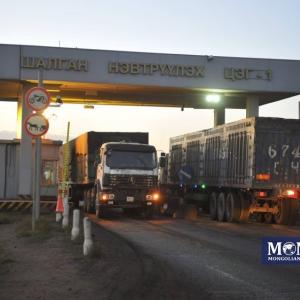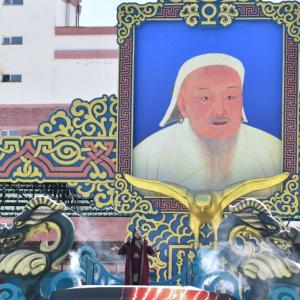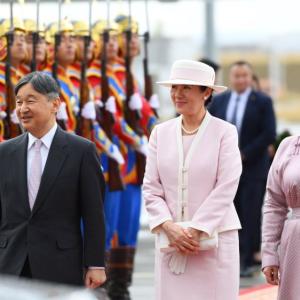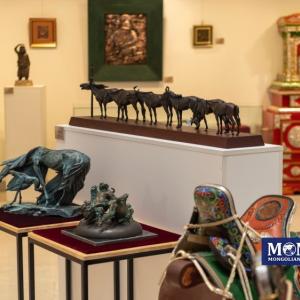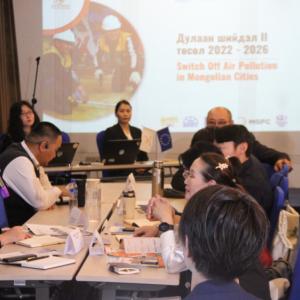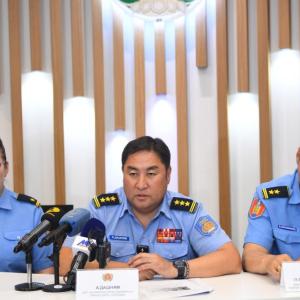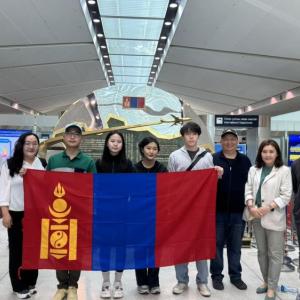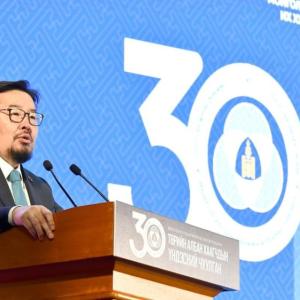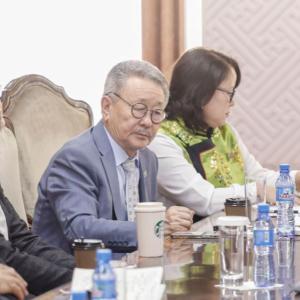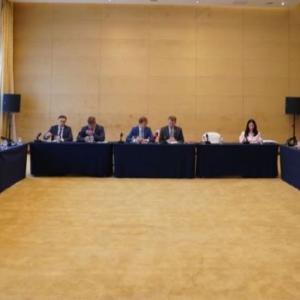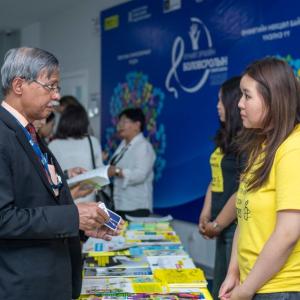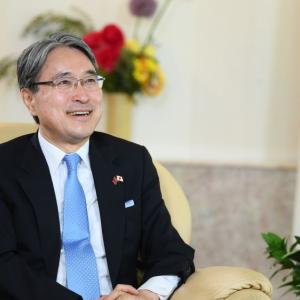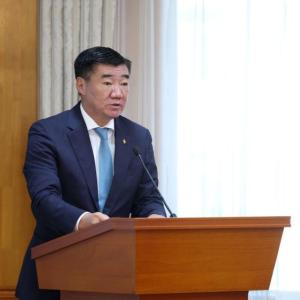Population
About Mongolia | DemographicsPopulation
Mongolia is not entirely homogeneous with respect to ethnicity and religion. Nearly 90% of the population is Mongols, among whom the Khalky-Mongols are the largest subgroup (about 75% of the total). The next largest group is the Kazakhs (5.3%) who live predominantly in the far west. More recently, they have begun migrating in large numbers to the Kazakhstan. There are also other smaller ethnic groups including Tuvins, Uzbeks Uighurs, Russians, Chinese and others. The national language is Mongolian. Mongolian population density is 1.9 people per square kilometers making it one of the most sparsely populated countries in the world.

On January 28, 2015, Mongolia has welcomed its three-millionth citizen. The one-millionth citizen of the country was born in 1962 and the two-millionth in 1988. As of February 2016, the population of Mongolia was estimated 3,026,793 people. This is an increase of 1.49 % (43 528 people) compared to population of 2 923 273 the year before. In 2015 the natural increase was positive, as the number of births exceeded the number of deaths by 43 528. Total life expectancy (both sexes) at birth for Mongolia is 68.3 years. Male life expectancy at birth is 65 years. Female life expectancy at birth is 75 years. Sex ratio of the total population is 98.02 males per 100 females in 2015.
As of the beginning of 2016, the country had the following population age distribution.
0-14 years: 26.87% (male 409,994/female 394,195)
15-24 years: 17.69% (male 267,507/female 261,869)
25-54 years: 45.04% (male 653,195/female 694,688)
55-64 years: 6.29% (male 86,401/female 101,714)
65 years and over: 4.12% (male 50,372/female 72,973) (2015 est.)
The National Statistical Committee’s (NSC) ‘Population Clock’ that started operating in November 2008 to measure Mongolia’s population growth, showed that Mongolia’s population increasing by one every 10.54 minutes. This calculation is to be renewed annually based on actual population growth statistics from the previous year.
Ethnic groups
81.9 per cent of the population is Khalkhs. Dorvod 2.8%, Bayad 2.1%, Buryats 1.7%, Zakhchin 1.2%, Dariganga 1%, Uriankhai 1%, other 4.6% . The other major ethnic group, the Kazakhs make up about 3,8 percent of the population and live in western Mongolia, mainly in Bayan-Ulgii Aimag (2010 est.).
Khalkh. The Khalkh ethnic group has four parts, largely based on where they settled: Eljgen
Khalkh, Eevenhen Khalkh, Tov Khalkh and Borjigon Khalkh. The Khalkh are still the dominant ethnic group in Mongolia.
Barga. Originally from the Lake Baigal region of Siberia, they number 1560 and live in remote
pockets of Dornod and Tuv aimags.
Bayad. Descendants of Oirad Mongols; The Bayad group mainly settled in Khyargas, Tes, Malchin and Zuungobi soums (Uvs Aimag).
Buryat. They number about 47,500 and live in the northern aimags of Bulgan, Dornod, Khentii and Selenge.
Dariganga. The Dariganga are a subgroup of the Khalkh, first noted in the 15th century. They mostly inhabit eastern Mongolia, Dornod and Sukhbaatar aimags (about 32,300).
Darkhad. Descended from Turkic people; there are about 15,000 in Khuvsgul.
Durvud. The Durvud settled in Bukh Murun, Davst, Olgii, Omnogobi, Turgen, Khovd, Zavkhan and Naranbulag soums (Uvs Aimag); Durgun soum (Khovd Aimag); and Nogoon Nuur soum (Bayan-Olgii Aimag). They form 2.8 percent of the population.
Khoton. The Khoton ethnic group consists of the ‘Mongolised’ Uigur people of Turkic descent. The Khoton live mainly in Tarialan soum, Uvs Aimag, and form 0.3 percent of the Mongolian population.
Myangad. Also of Turkic descent; about 5000 live in Khovd aimag.
Uuld. About 11,400 live in Khovd and Arkhangai aimags.
Torguud. The Torguud chiefly settled in Bulgan soum, Khovd Aimag, and are 0.3 percent of the population.
Tsaatan. Also known as the “reindeer people”, they are perhaps the smallest ethnic group; only about 200 live in the northern Khuvsgul aimags. The Mongolian Government has began to implement a project “Renovation of reindeer entities and improvement of Tsaatan’ living standards” for Uyghur origin Tsaatan (deer breeders) minority group in Mongolia. This project was implemented in two stages until 2015.
Uriankhai. Also known as Tuvans; they now comprise 1.06 percent of the Mongolian population.
Uzemchin. Only about 2000 live in Dornod and Sukhbaatar, sharing similarities with the ethnic Mongolians of Inner Mongolia.
Zakhchin The Zakhchin make up 1.2 percent of the population, and usually live in Mankhan, Altai and Uench soums, Khovd Aimag.
Social Protection of Population

Mongolia's tallest man Gongor was 2 metres and 64 centimetres.
An extensive system of social protection existed in pre-1990 Mongolia, with features typical to a centrally-planned economy such as price subsidy; generous pension benefits and family allowances; universal free health care and education. Social welfare has been re-structured by laws that came into effect on January 1, 1995. In the Social Insurance Law, fund for pensions, benefits, compensation for job-related accidents, and unemployment funds were established. The existing social welfare system in Mongolia has the following elements.
State Social Welfare Agency
- Social welfare service centres in 9 districts of Ulaanbaatar and the 21 aimags.
- Social welfare officers work in all soums.
- State and aimag nursing homes (the elderly, disabled and orphans) and sanatoriums for the elderly.
The pension insurance fund is the largest of the social welfare programs. It provides monthly cash benefits to participating workers who have retired or are disabled, and to survivors of participating workers. Workers must have contributed for at least 20 years to be eligible for full retirement benefits. The legislation says that man of 60 with social welfare insurance may retire, and a woman of 55 (or 50 if a mother of at least four children) may retire. The 1999 legislation defined a new way of computing pensions for workers born after 1960. Each worker’s contribution accumulates with interest in that worker’s individual account. Parliament has passed fundamental guidelines on pension reforms up to 2021. Steps for the introduction of pension insurance accounts, as the first stage of reform, are being taken.
A social welfare service, part of social security, has two basic directions: social welfare, and care for the vulnerable. There were five laws for social welfare pensions and care services; these were amended and passed by the parliament in 1998 and came into effect January 1, 1999.
The social welfare structure is now: the State Social Welfare Office; social welfare centres in districts and aimags; and social workers in soums. A Social Welfare Sector Development Program is running for five years, financed by a $16 million loan. Half is to be spent on social welfare policy reforms, and the other half is used to change the structure and services of social welfare organizations. The government aims to help the poor, consistent with the market economy, by encouraging employment-generating activities such as setting up local enterprise promotion centers; creating women’s income-generation and employment opportunities.
The unemployment rate in Mongolia averaged 8.3 percent for the first two months of 2016. Data released by the National employment service, research and information center shows that there are 48 thousand people registered with the labor organization actively seeking employment. Also, there are around 7 thousand open jobs on the market.
In January 2016, the revenue of Social Insurance Fund amounted to MNT 109.4 billion, reflecting an increase of MNT 48.7 billion or 80.1 percent and the expenditure of the fund reached MNT 140.4 billion which increased by MNT 33.2 billion or 30.9 percent compared to same period of the previous year. Totally MNT 10.4 billion was granted to 148.0 thousand persons for pensions and social welfare subsidies from the Social Welfare Fund, whereas a number of the persons who received pensions and welfare allowances increased by 31.4 thousand or 26.9 percent, and the amount of pensions and allowances increased by MNT 2.4 billion or 30.2 percent compared to same period of the previous year. In January 2016, MNT 19.2 billion was granted from the Human Development Fund to 949.8 thousand children aged below 18 as a cash benefits.
Healthcare system
The healthcare system of Mongolia has undergone many transitions and changes since its establishment in 1921. The first healthcare system promised health services free of charge to the population of Mongolia under the first constitution of the People’s Republic of Mongolia. At this time, this promise was a bit ambitious because the country was not yet organized enough to handle such a daunting task. In order to keep true to its promise, Mongolia formed the Department of People’s Health Protection in 1925. This later expanded into the Ministry of Health in 1930. From 1941 to 1990, with subsidies from the former Soviet Union, the Mongolia transformed into a socialist system. During this period, there were vast improvements in the Mongolian health sector that can be seen in the increases in life expectancies, increases in infrastructural resources, and social services.
However, the Mongolian healthcare system disintegrated along with the dissolution of the former Soviet Union. Without subsidies, the Mongolian health sector fell apart. Since 1991, the Mongolian healthcare system has been slowly transitioning from a centrally-planned economy to a market-oriented economy, and its health sector has followed suit.
Since 1994, Mongolia has had a compulsory health insurance scheme, which requires employees and employers to contribute equal amounts. Insurance for children, seniors, and the disabled is covered by the government. In 2006, the Health Sector Strategic Master Plan was implemented. This is a policy platform designed to be in effect from 2006-2015 that hopes to increase life expectancy, reduce infant, child, and maternal mortality rates, improve nutritional status, improve basic sanitation services, increase the percentage of the population that has access to clean drinking water, decentralize healthcare services, and includes numerous other healthcare goals.
Mongolia has seen great positive changes in its healthcare system, and with a growing economy, this trend is predicted to continue. The government is presently spending 6 percent of the country’s Gross Domestic Product (GDP) on the health industry. Currently foreign aid makes up about 30 percent of the healthcare budget. There are hopes that by 2020, which is the year that economists have predicted will be when Mongolia will have one of the fastest growing economies in the world; it can become less reliant or even completely independent of foreign aid. However, one of the challenges that impede Mongolia from improving the health of its citizens is the disparity between the rural and urban areas and the rich and the poor. This is evident in the quality and accessibility to health and social services in rural areas. With the culture and lifestyle of the Mongolian population, it is often difficult for the government to create infrastructure that can service the nomadic or semi-nomadic groups. To tackle this problem, the Mongolian government is trying to create an e-health system so that regions can be linked through an integrated database.
Healthcare services are divided into three tiers. At the primary level are family group practices (FGP), which were established by the Health Sector Development Program (HSDP). These health centers can be quite large and offer a wide range of services. However, district hospitals may not be able to offer complicated medical procedures. At the tertiary level are the major hospitals and specialized facilities. These include centers for cancer, maternity care, psychiatric care, infectious diseases, and many more. These centers do offer a higher level of care, but still remain poorly equipped relative to western standards.
Including both public and private facilities, there are approximately 15 tertiary hospitals, 32 general hospitals, 13 district hospitals, 334 sub-district hospitals, 178 family group practices, 12 health centers, 13 centers for infectious diseases, 446 private hospitals, 35 emergency medical service centers, 26 blood transfusion stations, and 319 pharmacies. Furthermore, there are 6,162 doctors and 13,815 health workers working in the Mongolian health sector. First aid and primary health services are given by soum and family hospitals, covering 85 percent of the population. There are 26.2 physicians to every 10,000 people, similar to developed countries, but rural areas often lack medical staff. Hospital bed density is 6.8 beds/1,000 populations (2012.)
An electrophysiology laboratory for treating cardiac arrhythmia was officially launched at Shastin Central Hospital No.3 on February 19, 2016. The hospital purchased machines and equipment for the laboratory for Tgs 1 billion 500 million in order to improve its cardiovascular services. In Mongolia, the rates of mortality and becoming disabled caused by abnormal heart rhythms have been increased in the last 10-15 years. Formerly, many people would go to foreign countries to receive treatment for a cardiac rhythm disorder and spend USD 20-30 thousand for ablation surgery. Now, people are able to receive the safest and the most effective procedure in their home country for a relatively lower price thanks to the new laboratory. The ablation surgery for cardiac arrhythmia was previously included in the list of diseases that could only be treated in foreign countries.
Generally, the health of the Mongolians has been improving significantly. The infant mortality rate has shown a downward trend over the past two decades. The national average infant (first year) mortality rate per 1,000 live births is 22. Maternal mortality has been fairly stable around 161 per 100,000 live births in the last ten years, falling to 44 in 2015.
Some illness, such as louse-borne epidemic typhus, genital lymphgranulomatosis, smallpox and poliomyelitis are no longer health problem in Mongolia, but some problems are on the rise such as heart failure, liver disease and cancer. Other problems involve unequal health status and health service access between rural and urban populations, and between different income groups. The country is undergoing an epidemiological transition, with a decline in communicable diseases and a rise in non-communicable diseases in total mortality.
Mongolia historically has a strong commitment to immunization, evident in the coverage rate of over 90 per cent for TB, DPT, measles, hepatitis B, and polio.
More recently, renewed interest has emerged in traditional medicine, based on a revival of Buddhist beliefs and practices, and a fresh emphasis on traditions representing Mongolian identity.

 Ulaanbaatar
Ulaanbaatar
